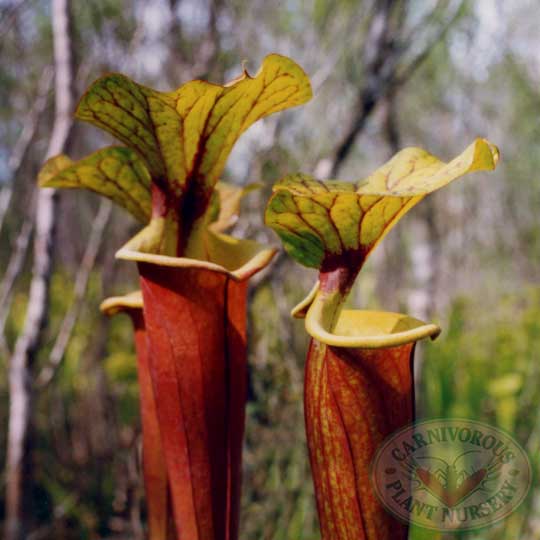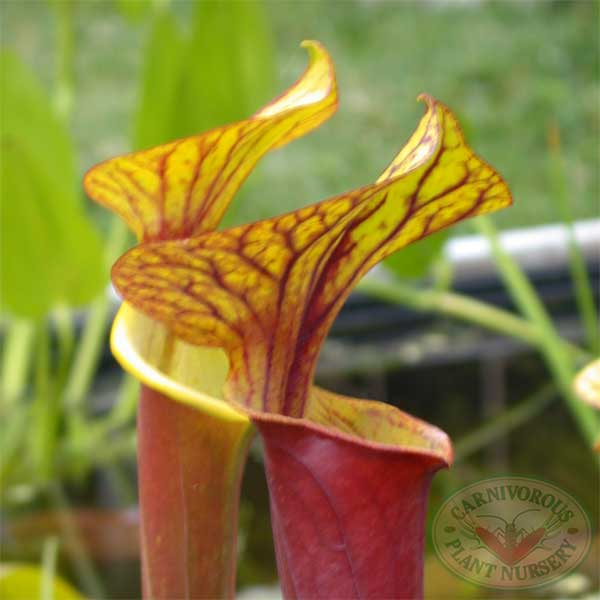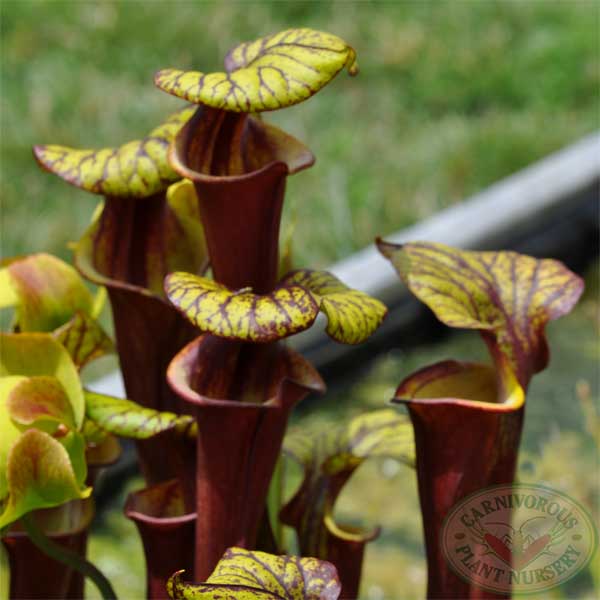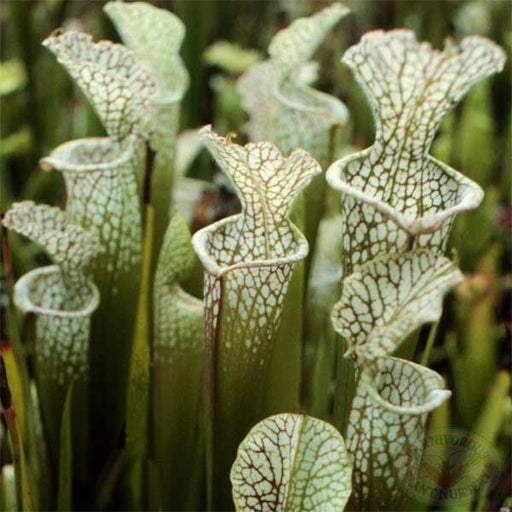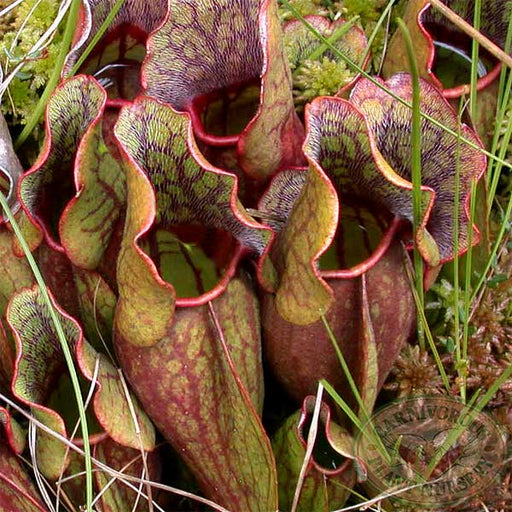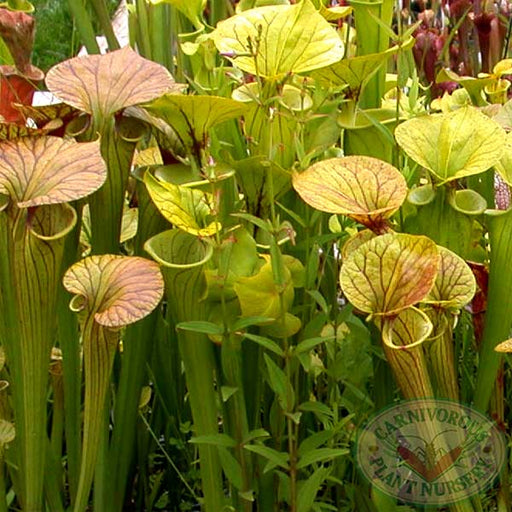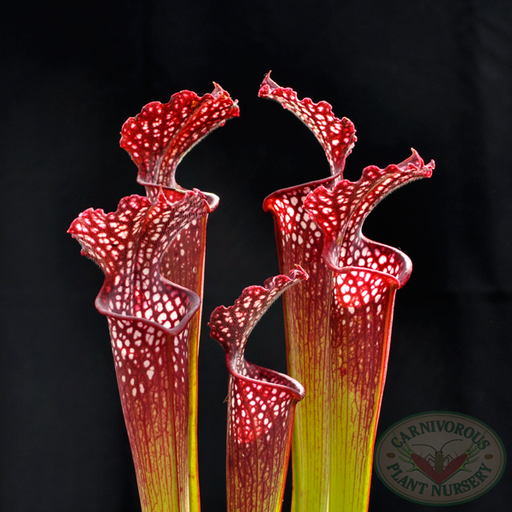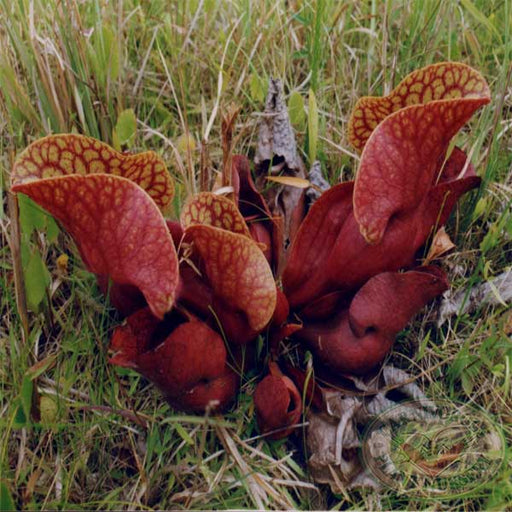Sarracenia flava rubricorpora
Ease to Grow: Easy
Dormancy: Required
Native Range: Wet Pocosins of Coastal Southeastern North America
Zones: 7-9 (6-10)
The traps of Sarracenia flava rubricorpora are distinctive and striking. The outer part of the traps are a pure red. The coloration of the lid can vary from mostly yellow with red venation to almost pure red. The throats can have a large dark purple splotch. Tube color may darken to a dark red by Fall. Undisturbed plants, after a year or two, need full sun to develop their distinctive red coloration. It is a rare and naturally occurring variety of S. flava from Southeastern North America. It is often referred to as the 'red tube' form, and is highly sought after by enthusiasts. S. flava rubricorpora grows well in wet bog soil. It has its best traps in Spring when they are considerably larger and sturdier. They fade by Summer and develop phyllodia (flat leaves) that persist through winter. The very large and showy flowers are yellow, and fragrant. They are in dramatic contrast with the tubes, and are one of the largest and most spectacular blooms within the Sarracenia. They generally bloom from March to May before the pitchers fully develop. S. flava rubricorpora is a wonderful plant for the bog garden or collection, and will grow in northern zones with winter protection. Sarracenia flava was one of the first pitcher plants to be discovered by European naturalists in the 1600s.
Plants are shipped bare-root, wrapped in damp sphagnum moss. In it's dormant season, it will be shipped as a dormant rhizome with trimmed off pitchers. Photographs are representative of species, and not the specific plant shipped. Veining and coloration may vary because these are a seed strain. S. flava rubricorpora like similar red-tubed Pitcher Plants produce a small number of pitchers.
Height: 12" - 28"
Plant Type: Perennial, temperate
Soil: Upper Bog Mix or All-Purpose Mix
Light: Bright indoors, full sun outdoors
Use: Grows well in the bog garden, greenhouse and indoors. It is an excellent accent plant.

